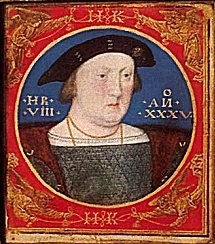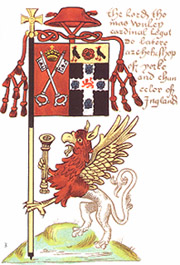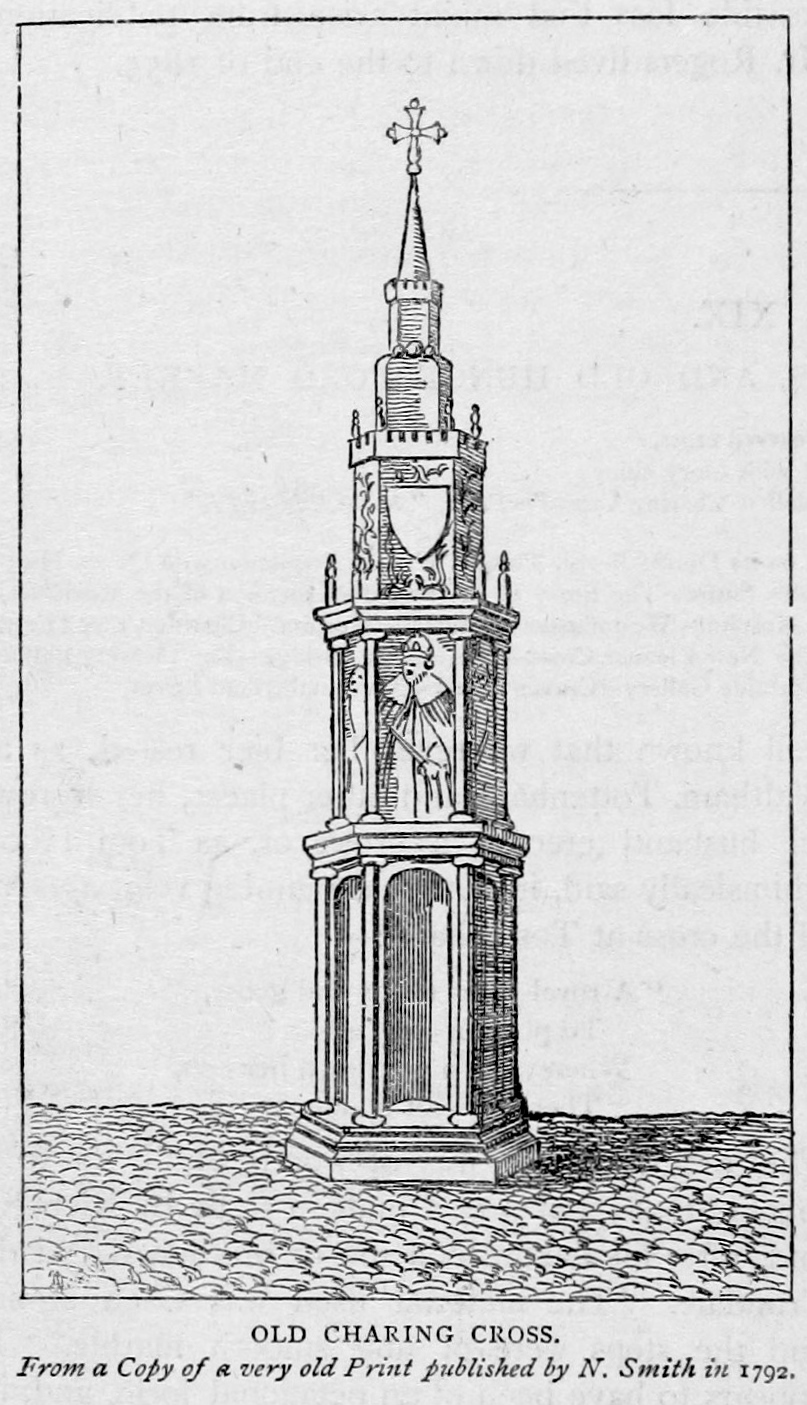|
Lucas Hornebolte
Lucas Horenbout, often called Hornebolte in England ( 1490/1495–1544), was a Flemish artist who moved to England in the mid-1520s and worked there as "King's Painter" and court miniaturist to King Henry VIII from 1525 until his death. He was trained in the final phase of Netherlandish illuminated manuscript painting, in which his father Gerard was an important figure, and was the founding painter of the long and distinct English tradition of portrait miniature painting. He has been suggested as the Master of the Cast Shadow Workshop, who produced royal portraits on panel in the 1520s or 1530s. Life and family Horenbout was born in Ghent, where he trained with his father, Gerard Horenbout, becoming a Master of the local Guild of Saint Luke in 1512. Gerard was an important Flemish manuscript illuminator in the dying days of that art-form, who had been court painter, from 1515 to about 1522, to Margaret of Austria, Regent of the Netherlands. Margaret was twice sister-in-l ... [...More Info...] [...Related Items...] OR: [Wikipedia] [Google] [Baidu] |
Horenbout HenryVIII
Horenbout or Hornebolt is a surname. Notable people with the surname include: *Gerard Horenbout (1465–1541), Flemish miniaturist *Lucas Horenbout Lucas Horenbout, often called Hornebolte in England ( 1490/1495–1544), was a Flemish people, Flemish artist who moved to England in the mid-1520s and worked there as "King's Painter" and court miniaturist to Henry VIII of England, King Hen ... (1490/1495–1544), Flemish artist * Susannah Horenbout (1503–1554), English artist {{surname ... [...More Info...] [...Related Items...] OR: [Wikipedia] [Google] [Baidu] |
Cardinal Wolsey
Thomas Wolsey ( – 29 November 1530) was an English statesman and Catholic bishop. When Henry VIII became King of England in 1509, Wolsey became the king's almoner. Wolsey's affairs prospered and by 1514 he had become the controlling figure in virtually all matters of state. He also held important ecclesiastical appointments. These included the Archbishopric of York—the second most important role in the English church—and that of papal legate. His appointment as a cardinal by Pope Leo X in 1515 gave him precedence over all other English clergy. The highest political position Wolsey attained was Lord Chancellor, the king's chief adviser (formally, as his successor and disciple Thomas Cromwell was not). In that position, he enjoyed great freedom and was often depicted as an ''alter rex'' ("other king"). After failing to negotiate an annulment of Henry's marriage to Catherine of Aragon, Wolsey fell out of favour and was stripped of his government titles. He retreated to ... [...More Info...] [...Related Items...] OR: [Wikipedia] [Google] [Baidu] |
Uffizi
The Uffizi Gallery (; it, Galleria degli Uffizi, italic=no, ) is a prominent art museum located adjacent to the Piazza della Signoria in the Historic Centre of Florence in the region of Tuscany, Italy. One of the most important Italian museums and the most visited, it is also one of the largest and best known in the world and holds a collection of priceless works, particularly from the period of the Italian Renaissance. After the ruling House of Medici died out, their art collections were given to the city of Florence under the famous ''Patto di famiglia'' negotiated by Anna Maria Luisa, the last Medici heiress. The Uffizi is one of the first modern museums. The gallery had been open to visitors by request since the sixteenth century, and in 1765 it was officially opened to the public, formally becoming a museum in 1865. History The building of the Uffizi complex was begun by Giorgio Vasari in 1560 for Cosimo I de' Medici so as to accommodate the offices of the Florentine ... [...More Info...] [...Related Items...] OR: [Wikipedia] [Google] [Baidu] |
Self-portrait
A self-portrait is a representation of an artist that is drawn, painted, photographed, or sculpted by that artist. Although self-portraits have been made since the earliest times, it is not until the Early Renaissance in the mid-15th century that artists can be frequently identified depicting themselves as either the main subject, or as important characters in their work. With better and cheaper mirrors, and the advent of the panel painting, panel portrait, many painters, sculptors and printmakers tried some form of self-portraiture. ''Portrait of a Man in a Turban'' by Jan van Eyck of 1433 may well be the earliest known panel self-portrait. He painted a separate portrait of his wife, and he belonged to the social group that had begun to commission portraits, already more common among wealthy Netherlanders than south of the Alps. The genre is venerable, but not until the Renaissance, with increased wealth and interest in the individual as a subject, did it become truly popular. [...More Info...] [...Related Items...] OR: [Wikipedia] [Google] [Baidu] |
Karel Van Mander
Karel van Mander (I) or Carel van Mander I (May 1548 – 2 September 1606) was a Flemish painter, poet, art historian and art theoretician, who established himself in the Dutch Republic in the latter part of his life. He is mainly remembered as a biographer of Early Netherlandish painters and Northern Renaissance artists in his ''Schilder-boeck''. As an artist and art theoretician he played a significant role in the spread and development of Northern Mannerism in the Dutch Republic.Painting in the Dutch Golden Age - A Profile of the Seventeenth Century, National Gallery of Art, 2007, p. 119 Life Most of the information about Karel van Mander's life is based on a brief and anonymous biographical sketch included in the posthumous second edition of the Schilder-boeck published in 1618 by Jacob Pietersz Wachter. It is not certain who wrote this biographical sketch and various candidates have been proposed. Most recently it has been argued that it was written by his son Kare ... [...More Info...] [...Related Items...] OR: [Wikipedia] [Google] [Baidu] |
Jean Clouet
Jean (or Janet) Clouet (1480–1541) was a miniaturist and painter who worked in France during the High Renaissance. He was the father of François Clouet. Biography The authentic presence of this artist at the French court is first mentioned in 1516, the second year of the reign of Francis I. By a deed of gift made by the king to the artist's son of his father's estate, which had escheated to the crown, we learn that he was not actually a Frenchman, and never naturalized. He is supposed to have been a native of the Low Countries, and probably his real name was Cloet. He lived several years in Tours, and there it was he met his wife, who was the daughter of a jeweller. He is recorded as living in Tours in 1522, and there is a reference to his wife's residence in the same town in 1523. In that year Clouet was awarded the position of Groom of the Chamber by the King, with a stipend at first of 180 livres and later of 240. He and his wife were certainly living in Paris in 1529, ... [...More Info...] [...Related Items...] OR: [Wikipedia] [Google] [Baidu] |
Catherine Parr
Catherine Parr (sometimes alternatively spelled Katherine, Katheryn, Kateryn, or Katharine; 1512 – 5 September 1548) was Queen of England and Ireland as the last of the six wives of King Henry VIII from their marriage on 12 July 1543 until Henry's death on 28 January 1547. Catherine was the final queen consort of the House of Tudor, and outlived Henry by a year and eight months. With four husbands, she is the most-married English queen. She was the first woman to publish an original work under her own name in English in England. Catherine enjoyed a close relationship with Henry's three children, Mary, Elizabeth, and Edward. She was personally involved in the education of Elizabeth and Edward. She was influential in Henry VIII's passing of the Third Succession Act in 1543 that restored his daughters Mary and Elizabeth to the line of succession to the throne. Catherine was appointed regent from July to September 1544 while Henry was on a military campaign in France and in c ... [...More Info...] [...Related Items...] OR: [Wikipedia] [Google] [Baidu] |
Saint Martin In The Fields
St Martin-in-the-Fields is a Church of England parish church at the north-east corner of Trafalgar Square in the City of Westminster, London. It is dedicated to Saint Martin of Tours. There has been a church on the site since at least the medieval period. It was at that time located in the farmlands and fields beyond the London wall, when it was awarded to Westminster Abbey for oversight. It became a principal parish church west of the old City in the early modern period as Westminster's population grew. When its medieval and Jacobean structure was found to be near failure, the present building was constructed in an influential neoclassical design by James Gibbs in 1722–1726. The church is one of the visual anchors adding to the open-urban space around Trafalgar Square. History Roman era Excavations at the site in 2006 uncovered a grave from about A.D. 410. The site is outside the city limits of Roman London (as was the usual Roman practice for burials) but is particularly ... [...More Info...] [...Related Items...] OR: [Wikipedia] [Google] [Baidu] |
London
London is the capital and largest city of England and the United Kingdom, with a population of just under 9 million. It stands on the River Thames in south-east England at the head of a estuary down to the North Sea, and has been a major settlement for two millennia. The City of London, its ancient core and financial centre, was founded by the Romans as '' Londinium'' and retains its medieval boundaries.See also: Independent city § National capitals The City of Westminster, to the west of the City of London, has for centuries hosted the national government and parliament. Since the 19th century, the name "London" has also referred to the metropolis around this core, historically split between the counties of Middlesex, Essex, Surrey, Kent, and Hertfordshire, which largely comprises Greater London, governed by the Greater London Authority.The Greater London Authority consists of the Mayor of London and the London Assembly. The London Mayor is distinguished fr ... [...More Info...] [...Related Items...] OR: [Wikipedia] [Google] [Baidu] |
Charing Cross
Charing Cross ( ) is a junction in Westminster, London, England, where six routes meet. Clockwise from north these are: the east side of Trafalgar Square leading to St Martin's Place and then Charing Cross Road; the Strand leading to the City; Northumberland Avenue leading to the Thames Embankment; Whitehall leading to Parliament Square; The Mall leading to Admiralty Arch and Buckingham Palace; and two short roads leading to Pall Mall. The name also commonly refers to the Queen Eleanor Memorial Cross at Charing Cross station. A bronze equestrian statue of Charles I, erected in 1675, stands on a high plinth, situated roughly where a medieval monumental cross had previously stood for 353 years (since its construction in 1294) until destroyed in 1647 by Cromwell and his revolutionary government. The famously beheaded King, appearing ascendant, is the work of French sculptor Hubert Le Sueur. The aforementioned eponymous monument, the "Charing Cross", was the largest and most o ... [...More Info...] [...Related Items...] OR: [Wikipedia] [Google] [Baidu] |







